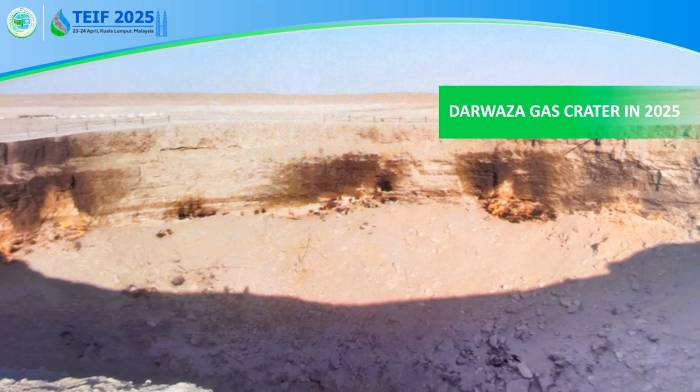At the International Forum on Attracting Foreign Investments to Turkmenistan’s Economy (TEIF 2025) held in Kuala Lumpur, Murad Archayev, Deputy Chairman of the State Concern “Turkmengaz,” presented the country’s strategy for sustainable development and energy transformation. Possessing some of the world’s largest natural gas reserves, Turkmenistan aims to utilize this resource with maximum efficiency while prioritizing environmental responsibility.
Murad Archayev emphasized that natural gas is a low-carbon fuel capable of replacing more polluting energy sources, such as coal and oil. “The energy transition is not about abandoning traditional fuels but adapting them to the new demands of sustainable development,” he noted.
“Turkmengaz” is actively working on the monetization of natural gas to supply global markets with clean energy. Transitioning to less polluting fuels like natural gas contributes to reducing greenhouse gas emissions and improving air quality.
A key priority for Turkmenistan is reducing methane emissions, a potent greenhouse gas. At the COP 28 summit, the country reaffirmed its commitment to the Global Methane Pledge, initiating the adoption of modern methane monitoring and capture technologies. In collaboration with the UN and UNEP, Turkmenistan established a technical dialogue and developed roadmaps for 2023–2024 and 2025–2026 aimed at reducing global methane emissions by 30% by 2030 compared to 2020 levels.
Since March 2024, in partnership with UNEP, Turkmenistan has implemented the MARS digital platform, which analyzes satellite data on methane emission sources. Monitoring results from June 2024 to February 2025 showed zero emissions in several production units, marking a significant achievement.
According to a report by the independent international company Kayrros, Turkmenistan’s total methane emissions have decreased by 10% since 2020, despite increased production volumes.
Success in Managing the Darwaza Crater
A vivid example of an environmentally responsible approach is the reduction in gas flaring intensity at the Darwaza Crater, known as “Chaldjulba.” Specialists from the Natural Gas Research Institute developed a program successfully implemented by “Turkmengaz.”
In July 2024, observation well No. 11 was commissioned, yielding an industrial inflow of low-pressure gas from a depth of 200 meters. Exploratory well No. 12, reactivated from conservation, produced a flow of slightly gasified formation water, confirming control over filtration flows and gas supply to the crater. In December 2024, drilling of well No. 4 was completed, delivering a gas inflow of approximately 600,000 cubic meters per day. Additional wells are expected to be commissioned soon, increasing gas collection rates.
Satellite data indicates that the crater’s flaring intensity has decreased by more than half. While the blazing glow was once visible for many kilometers, only small burning foci remain. This experience demonstrates that effective resource management not only enhances efficiency but also minimizes environmental impact.
Turkmenistan is open to cooperation with international partners who share its goals of energy transformation and environmental responsibility. The country actively fulfills its commitments under the Paris Agreement, the National Climate Change Strategy, and the UN Framework Convention, aligning its actions with global initiatives.
Murad Archayev stressed that a sustainable future is only possible through collective efforts. Turkmenistan invites investors and technology companies to partner in developing innovative solutions for the efficient use of natural gas and emission reduction. ///nCa, 24 April 2025
